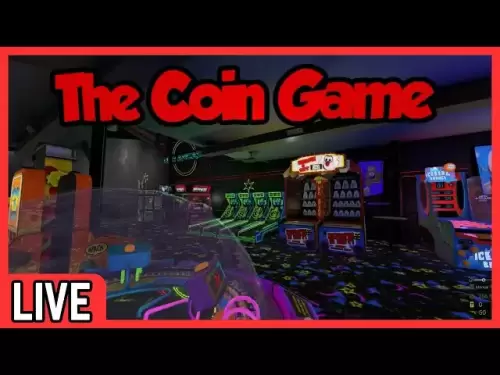-
 Bitcoin
Bitcoin $119,307.8340
-0.09% -
 Ethereum
Ethereum $2,996.2401
0.31% -
 XRP
XRP $2.9260
3.16% -
 Tether USDt
Tether USDt $1.0001
-0.03% -
 BNB
BNB $688.6252
-0.73% -
 Solana
Solana $162.0187
0.23% -
 USDC
USDC $0.9998
-0.01% -
 Dogecoin
Dogecoin $0.1967
-1.19% -
 TRON
TRON $0.3024
0.19% -
 Cardano
Cardano $0.7315
-1.48% -
 Hyperliquid
Hyperliquid $47.5984
-3.19% -
 Stellar
Stellar $0.4532
-8.55% -
 Sui
Sui $3.8371
6.14% -
 Chainlink
Chainlink $15.6789
-0.24% -
 Hedera
Hedera $0.2378
-2.85% -
 Bitcoin Cash
Bitcoin Cash $503.1103
-1.03% -
 Avalanche
Avalanche $21.1298
-1.01% -
 UNUS SED LEO
UNUS SED LEO $9.0046
-0.35% -
 Shiba Inu
Shiba Inu $0.0...01315
-2.17% -
 Toncoin
Toncoin $3.0254
1.93% -
 Litecoin
Litecoin $95.3181
0.32% -
 Monero
Monero $344.0683
2.10% -
 Polkadot
Polkadot $3.9387
-1.82% -
 Uniswap
Uniswap $9.0508
5.52% -
 Dai
Dai $0.9998
-0.01% -
 Ethena USDe
Ethena USDe $1.0004
-0.02% -
 Bitget Token
Bitget Token $4.4609
1.26% -
 Pepe
Pepe $0.0...01217
-2.34% -
 Aave
Aave $313.8047
1.56% -
 Bittensor
Bittensor $406.8340
3.03%
how to find bitcoin block
By joining a mining pool and setting up specialized hardware and software, individuals can participate in the Bitcoin mining process to discover and add new blocks to the Bitcoin blockchain.
Oct 05, 2024 at 05:12 pm

How to Find Bitcoin Blocks
Bitcoin blocks are the fundamental building blocks of the Bitcoin blockchain. They contain a record of all Bitcoin transactions that have been processed and verified by the network. Each block is linked to the previous block, creating an immutable and chronologically ordered chain of data.
Finding Bitcoin blocks involves participating in the Bitcoin mining process. Here's a step-by-step guide on how to find Bitcoin blocks:
Join a Mining Pool:
- Mining solo is computationally expensive and unlikely to yield results. Instead, join a mining pool that combines the resources of multiple miners, increasing your chances of finding a block.
Set Up Mining Software:
- Install specialized mining software, such as Bitcoin Miner, CGminer, or EasyMiner, which connects you to the mining pool.
Configure Your Hardware:
- Determine the most suitable hardware for mining, such as an ASIC miner, a GPU rig, or even a CPU. Configure your hardware to optimize its mining efficiency.
Start Mining:
- Once your hardware and software are ready, start the mining process. Your mining software will automatically connect to the pool and begin searching for Bitcoin blocks.
Monitor Your Progress:
- Keep track of your mining progress using the statistics provided by your mining software or the pool's website. Monitor metrics such as hash rate, block height, and estimated time to find a block.
Claim Your Reward:
- When you successfully find a block, it will be added to the Bitcoin blockchain and you will receive a block reward. The reward is currently 6.25 BTC per block, but it is halved every 210,000 blocks (approximately every 4 years).
Finding Bitcoin blocks requires significant computational power and electricity consumption. The difficulty of finding a block increases with the number of miners on the network. However, the reward for finding a block can be substantial, and it is a key part of the Bitcoin mining ecosystem.
Disclaimer:info@kdj.com
The information provided is not trading advice. kdj.com does not assume any responsibility for any investments made based on the information provided in this article. Cryptocurrencies are highly volatile and it is highly recommended that you invest with caution after thorough research!
If you believe that the content used on this website infringes your copyright, please contact us immediately (info@kdj.com) and we will delete it promptly.
- BDAG X1 App Skyrockets, SHIB Rebounds, and XMR Holds Strong: What's Happening?
- 2025-07-15 07:10:12
- Ruvi AI: The Audited Token Set to Outshine Ethereum with Massive Gains?
- 2025-07-15 06:50:12
- DeFi Token with 10X Potential: Mutuum Finance and the Year-End Opportunity
- 2025-07-15 06:50:12
- Bitcoin's Wild Ride: $120K Surge, Crypto Bill Buzz, and What It All Means
- 2025-07-15 07:10:12
- XRP's Cup and Handle: Millionaire Target in Sight?
- 2025-07-15 07:50:12
- Bitcoin Blasts Past $186,000: A New Milestone or Just the Beginning?
- 2025-07-15 08:10:12
Related knowledge

What is the significance of the 21-week EMA in a Bitcoin bull market?
Jul 10,2025 at 06:56pm
Understanding the 21-Week EMA in Cryptocurrency AnalysisThe 21-week Exponential Moving Average (EMA) is a technical indicator widely used by traders a...

How to identify a volatility contraction pattern on Bitcoin using indicators?
Jul 07,2025 at 07:28am
What is a Volatility Contraction Pattern in Bitcoin Trading?A volatility contraction pattern refers to a phase where the price movement of an asset, s...

Do indicators work better on a logarithmic or linear scale for Bitcoin's long-term chart?
Jul 08,2025 at 01:42pm
Understanding Chart Scales in Cryptocurrency TradingIn cryptocurrency trading, particularly for analyzing Bitcoin's long-term trends, chart scales pla...

What is the Woodies CCI indicator and can it be used for Bitcoin?
Jul 04,2025 at 05:14pm
Understanding the Woodies CCI IndicatorThe Woodies CCI indicator is a variation of the traditional Commodity Channel Index (CCI), which was originally...

How to use indicators to trade the opening range breakout for Bitcoin CME futures?
Jul 05,2025 at 07:35pm
What Is the Opening Range Breakout Strategy?The opening range breakout (ORB) strategy is a popular trading technique used in both traditional markets ...

How to use the Relative Vigor Index (RVI) for Bitcoin trading?
Jul 07,2025 at 02:00pm
Understanding the Relative Vigor Index (RVI)The Relative Vigor Index (RVI) is a technical analysis tool used to assess the strength of price movements...

What is the significance of the 21-week EMA in a Bitcoin bull market?
Jul 10,2025 at 06:56pm
Understanding the 21-Week EMA in Cryptocurrency AnalysisThe 21-week Exponential Moving Average (EMA) is a technical indicator widely used by traders a...

How to identify a volatility contraction pattern on Bitcoin using indicators?
Jul 07,2025 at 07:28am
What is a Volatility Contraction Pattern in Bitcoin Trading?A volatility contraction pattern refers to a phase where the price movement of an asset, s...

Do indicators work better on a logarithmic or linear scale for Bitcoin's long-term chart?
Jul 08,2025 at 01:42pm
Understanding Chart Scales in Cryptocurrency TradingIn cryptocurrency trading, particularly for analyzing Bitcoin's long-term trends, chart scales pla...

What is the Woodies CCI indicator and can it be used for Bitcoin?
Jul 04,2025 at 05:14pm
Understanding the Woodies CCI IndicatorThe Woodies CCI indicator is a variation of the traditional Commodity Channel Index (CCI), which was originally...

How to use indicators to trade the opening range breakout for Bitcoin CME futures?
Jul 05,2025 at 07:35pm
What Is the Opening Range Breakout Strategy?The opening range breakout (ORB) strategy is a popular trading technique used in both traditional markets ...

How to use the Relative Vigor Index (RVI) for Bitcoin trading?
Jul 07,2025 at 02:00pm
Understanding the Relative Vigor Index (RVI)The Relative Vigor Index (RVI) is a technical analysis tool used to assess the strength of price movements...
See all articles

























































































